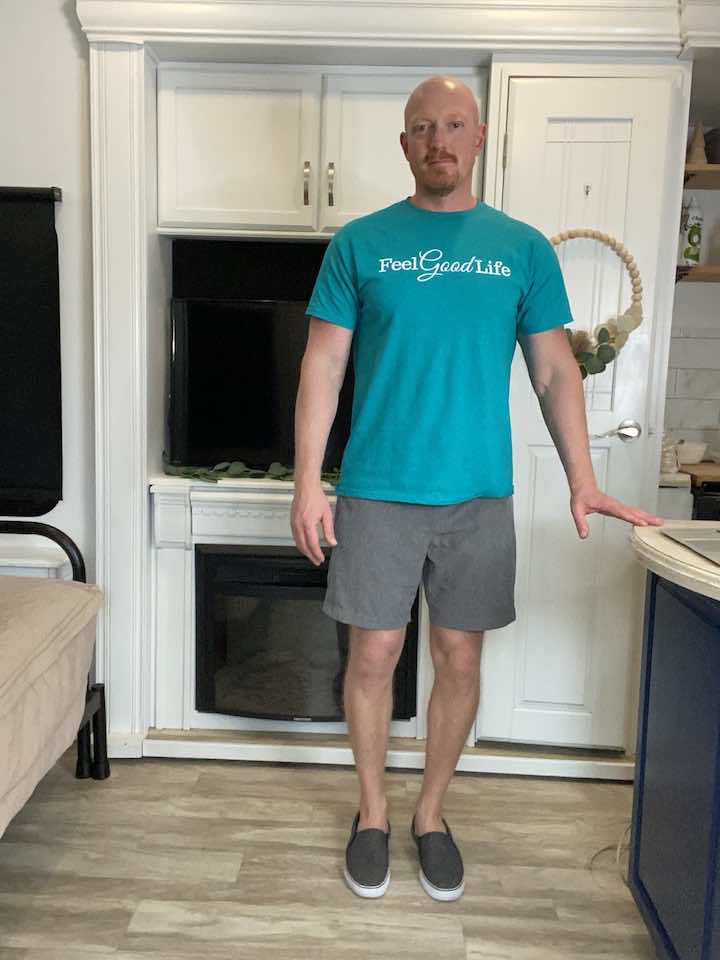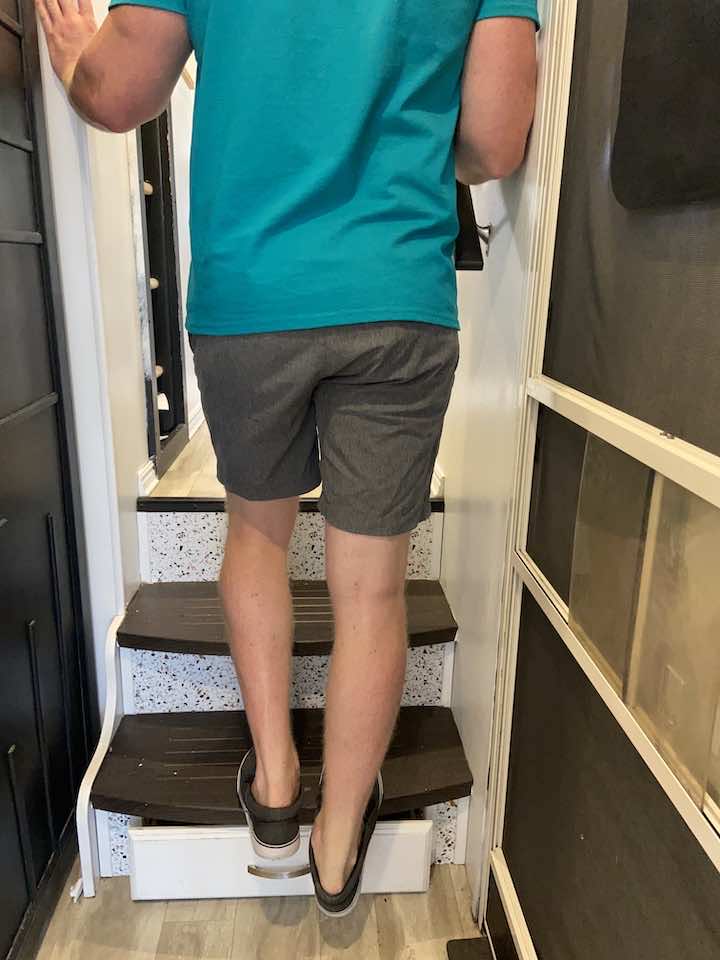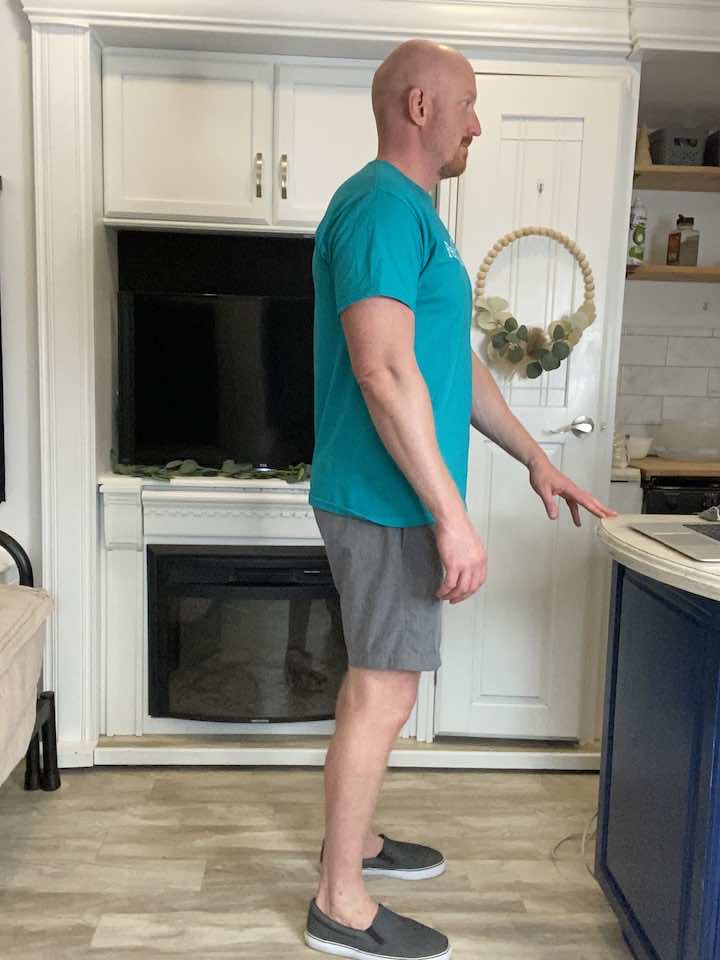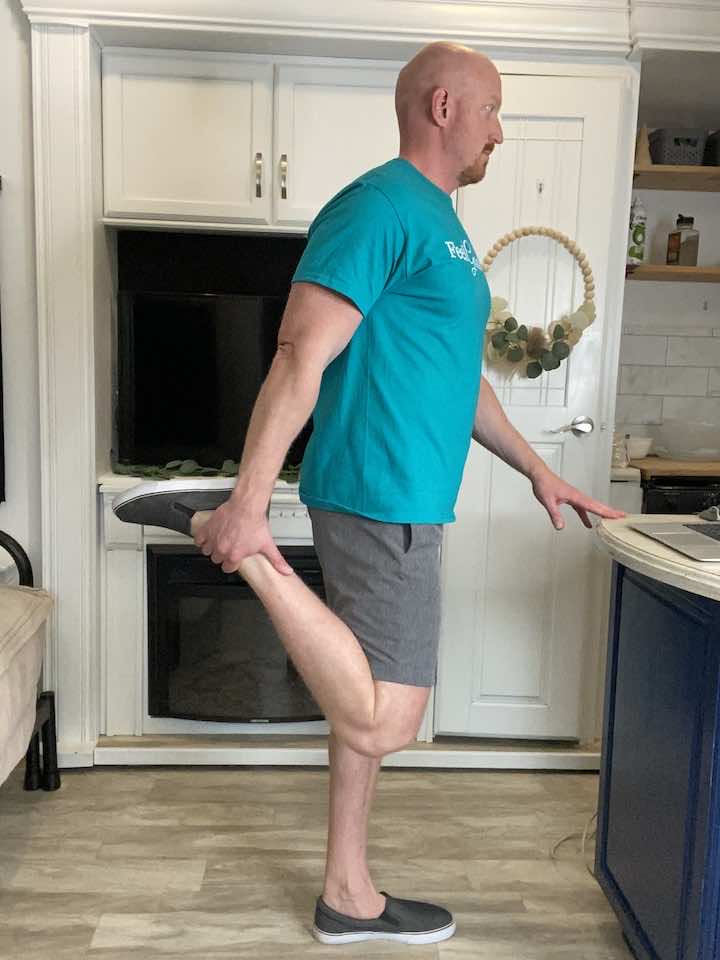Free download: Top 10 Natural & Easy Remedies for Joint Pain from Home. Learn these helpful remedies.
Estimated Reading Time: 8 minutes read
Do you know that funny popping sound your knee makes when you move it? Well, that’s what we call knee-cracking. It’s a common condition that can happen to anyone, but it’s especially common as we get older.
So why does it happen? Well, think of your knee joint like a balloon filled with water. It’s kind of like popping bubble wrap but in your knee! When you move your knee, the pressure changes inside the joint can cause little gas bubbles to pop, making that popping sound.
Now, knee cracking isn’t usually something to worry about, but it can literally be a pain in the knee. That’s why taking care of your knees and preventing further problems is essential. Some simple things you can do are to keep a healthy weight, exercise regularly, and wear supportive shoes.
If your knee cracking is causing you pain or other symptoms, it’s always a good idea to talk to your doctor. They can help you figure out what’s going on and recommend the best treatment for you.
So there you have it, knee cracking explained in a way that’s easy to understand. Remember, if your knee starts making more noise than your grandkids, it’s time to take action!
In this article, we will discuss the causes of knee cracking and provide tips and remedies for stopping your knees from cracking. We will also discuss some exercises that can help strengthen the muscles around your knee joint and reduce knee cracking.
Table of Contents
What Causes Knee Cracking?
Knee cracking can be caused by various things, such as gas bubbles, ligament or tendon movement, arthritis, knee injuries, and aging. It’s kind of like when you hear a funny noise in your car; there are a few different things that could be causing it.
1. Gas Bubbles
The most common cause of knee cracking is the presence of gas bubbles in the fluid that surrounds your knee joint. When you move your knee, the pressure changes inside the joint can cause these bubbles to pop, resulting in a popping or cracking sound. It’s kind of like when you open a can of soda and hear that satisfying “pop”!
2. Ligament or Tendon Movement
Another common cause of knee cracking is the movement of tendons or ligaments over bony structures in the knee joint. This can also result in a popping or cracking sound. It’s like when you play with a rubber band, and it makes a snapping noise.
3. Arthritis
Knee cracking can also be a symptom of arthritis, particularly osteoarthritis. This condition can cause the cartilage in the knee joint to wear away, leading to increased friction between the bones and a higher likelihood of cracking or popping. It’s like when the door hinges start to get old and creaky.
4. Knee Injuries
Injuries to the knee, such as a torn meniscus or a ligament sprain, can also lead to knee cracking. These injuries can cause changes in the way the knee joint moves, leading to a popping or cracking sound. It’s like when you step on a twig, and it snaps.
5. Aging
As we age, the cartilage in our joints may begin to wear away, leading to an increased likelihood of knee cracking. It’s like when we start to get a little rusty and need some oiling up!
Tips and Exercises to Stop Knee Cracking
But don’t worry; there are things you can do to stop knee cracking and prevent further problems. Here are a few tips to help keep your knees in tip-top shape:
1. Exercises to Strengthen and Stretch Your Knees
Regular exercise can help to strengthen the muscles around your knee joint and improve the overall health of the joint. It may sound intimidating, but it can be as simple as walking around the block or doing some gentle stretching. It’s like giving your knee joint a little workout!
a. Overall Strength to Support Joint
These exercises focus on overall strength to support your knee joint:
1. Standing Hip Lifts


- Stand tall with one hand placed on a bed or chair. Balance on your left leg, keeping a soft bend in your knee to keep from locking out.
- Leading with your heel, lift your right leg out to the side. Be sure not to lean to the left.
- Repeat 3 sets of 10 repetitions per leg.
2. Standing Hip Extension


- Stand tall with your hands placed on a steady surface. You can use a counter, sink, or chair (no chairs with wheels) to hold on to for balance.
- Shift your weight onto your left leg, keeping a soft bend in your left knee to keep it from locking out.
- Then, keeping your toes pointed forward and your right leg straight, lift your right leg back a few inches, then lower back down.
- Repeat 3 sets of 10 repetitions.
3. Standing Hamstring Curls

- You can use 2-3 lb. ankle weights or tie a resistance band around the ankles.
- Stand in front of a sturdy surface, such as a countertop.
- Bend one knee, allowing the foot to kick up towards the bottom.
- Make sure the thighs remain close together.
- Return to your starting position. Repeat 3 sets of 10 repetitions.
- Practice on both legs.
4. Inner Hip Strengthening

- While lying on your back, knees bent, and feet flat on the floor, place a ball or rolled towel between your legs.
- Gently squeeze the ball or towel for 5 seconds before relaxing.
- Repeat 2 sets of 10 repetitions.
5. Full Leg Lifts


- Remove the towel from underneath your knee allowing your injured leg to lay straight out. Your opposite leg should be bent.
- Slowly raise your straight leg off the ground or bed and hold for 5 seconds.
- Gently control your foot back down.
- Repeat 3 sets of 10 repetitions.
6. Seated Towel/Pillow Press


- Sit up straight, grab either a pillow or rolled towel. Place the item under one leg, directly behind the knee.
- Rest your back against the headboard or lean back onto your hands if needed.
- While keeping good posture, press your knee into the towel/pillow for 5 seconds before relaxing.
- Repeat 2 sets of 10 repetitions on the same leg, then switch!
b. Overall Tightness
Tight muscles can also contribute to knee cracking, so it’s important to stretch regularly. Here are a few stretches to try:
1. Calf Stretch

- While holding onto the railing of a staircase, step both feet up.
- Slightly stagger your feet so that the injured heel is hanging off the step.
- Your front leg should bend slightly, while the back (injured) leg’s knee will be straight.
- Hold this stretch for 30 seconds before relaxing.
- Repeat the stretch two more times for a total of three sets.
2. Hamstring Stretch


- Lie on your back with one leg bent and one straight. Wrap the towel around the straight-leg’s foot and gently pull your leg up towards the ceiling.
- Think about driving that heel as close to the ceiling as you without causing any pain.
- Hold for 30 seconds. Relax and repeat on the opposite leg.
- Perform 3 sets per leg.
3. Hip Flexor Stretch


- Stand tall with your hands placed on a steady surface. You can use a counter, sink, or chair (no chairs with wheels) to hold on to for balance.
- Step back with your right leg. Keep your right leg straight, and bend your left knee a little.
- Keep your hips squared and facing forward while in this position. You should feel a pull in the front of your right hip.
- Hold 30 seconds, then switch legs, stepping back with your left leg.
- Perform 3 sets per leg.
4. Standing Quad Stretch


- Stand tall with your hands placed on a steady surface. You can use a counter, sink, or chair (no chairs with wheels) to hold on to for balance.
- Bend your knee and hold onto the top of your foot.
- Hold for 30 seconds, focusing on keeping your knees lined up.
- Repeat the stretch two more times for a total of three sets.
2. Maintain a Healthy Weight
Carrying extra weight can put added pressure on your knee joint, making knee cracking more likely. By maintaining a healthy weight, you can reduce the strain on your knees and help prevent further problems.
3. Wear Good Shoes
Wearing shoes with good support can help to reduce the impact on your knees when you walk or run. It’s like giving your knees a little cushion to protect them.
4. Apply Heat or Cold Therapy
Applying heat or cold therapy to your knee joint can help to reduce inflammation and alleviate pain. It’s like giving your knee joint a little spa treatment!
Conclusion
Remember, taking care of your knees can go a long way in preventing further problems down the road. You can keep your knees healthy and happy by staying active, maintaining a healthy weight, wearing supportive shoes, and applying heat or cold therapy.
But if your knee cracking is causing you pain or discomfort, don’t hesitate to talk to your doctor. They can help you determine what’s going on and recommend the best treatment. So, let’s keep our knees in good shape and keep on movin’!













